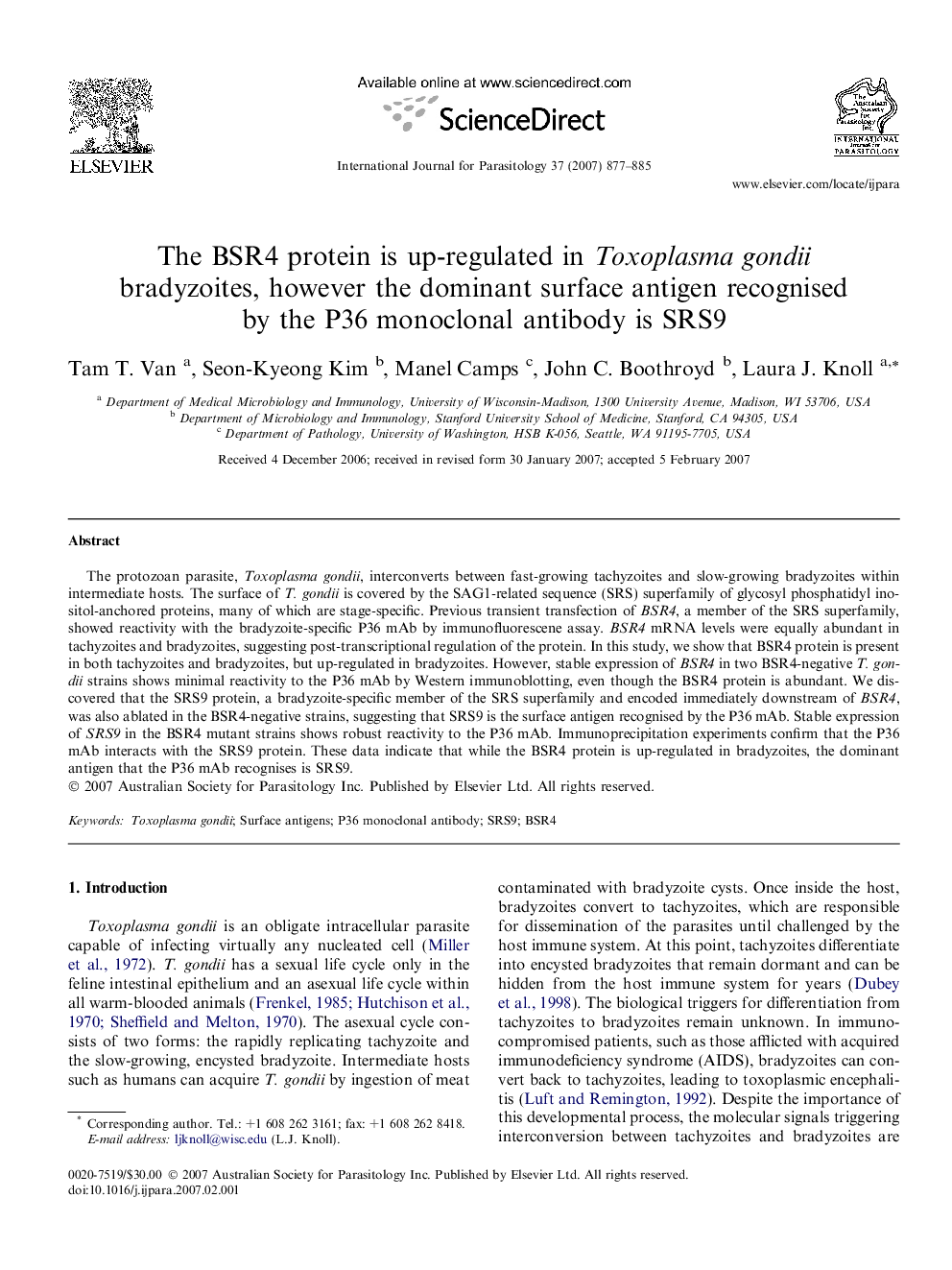| Article ID | Journal | Published Year | Pages | File Type |
|---|---|---|---|---|
| 8500356 | International Journal for Parasitology | 2007 | 9 Pages |
Abstract
The protozoan parasite, Toxoplasma gondii, interconverts between fast-growing tachyzoites and slow-growing bradyzoites within intermediate hosts. The surface of T. gondii is covered by the SAG1-related sequence (SRS) superfamily of glycosyl phosphatidyl inositol-anchored proteins, many of which are stage-specific. Previous transient transfection of BSR4, a member of the SRS superfamily, showed reactivity with the bradyzoite-specific P36 mAb by immunofluorescene assay. BSR4 mRNA levels were equally abundant in tachyzoites and bradyzoites, suggesting post-transcriptional regulation of the protein. In this study, we show that BSR4 protein is present in both tachyzoites and bradyzoites, but up-regulated in bradyzoites. However, stable expression of BSR4 in two BSR4-negative T. gondii strains shows minimal reactivity to the P36 mAb by Western immunoblotting, even though the BSR4 protein is abundant. We discovered that the SRS9 protein, a bradyzoite-specific member of the SRS superfamily and encoded immediately downstream of BSR4, was also ablated in the BSR4-negative strains, suggesting that SRS9 is the surface antigen recognised by the P36 mAb. Stable expression of SRS9 in the BSR4 mutant strains shows robust reactivity to the P36 mAb. Immunoprecipitation experiments confirm that the P36 mAb interacts with the SRS9 protein. These data indicate that while the BSR4 protein is up-regulated in bradyzoites, the dominant antigen that the P36 mAb recognises is SRS9.
Keywords
Related Topics
Life Sciences
Immunology and Microbiology
Parasitology
Authors
Tam T. Van, Seon-Kyeong Kim, Manel Camps, John C. Boothroyd, Laura J. Knoll,
